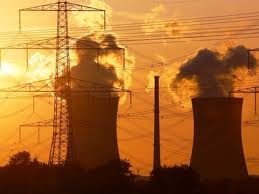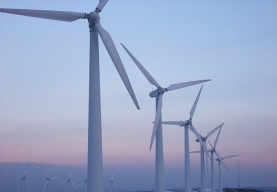China
The growth and development of natural gas in China
Whilst the growth of natural gas usage for industrial and power generation purposes is developing swiftly across Asia no country is investing as much money and effort into building their natural gas infrastructure as China is currently doing. Not only is the country developing long distance west to east gas pipelines to import the gas from neighboring countries it is also investing heavily into its exploring for domestic energy resources for the clean fuel which is already in big demand. In addition to these significant steps being taken to supply demand across the country there are now many Liquefied Natural Gas (LNG) receiving terminals coming online to receive large shipments of the cleaner fuel from overseas suppliers.
The growth and development of natural gas in China
Whilst the growth of natural gas usage for industrial and power generation purposes is developing swiftly across Asia no country is investing as much money and effort into building their natural gas infrastructure as China is currently doing. Not only is the country developing long distance west to east gas pipelines to import the gas from neighboring countries it is also investing heavily into its exploring for domestic energy resources for the clean fuel which is already in big demand. In addition to these significant steps being taken to supply demand across the country there are now many Liquefied Natural Gas (LNG) receiving terminals coming online to receive large shipments of the cleaner fuel from overseas suppliers.
Asia taking over leadership on smart grids still far from reality
The chances of Asia outpacing the West in terms of investments on smart grid are slim in the near term, says an industry player.
China rated most attractive market for solar energy projects
Bank Sarasin forecasts 2,500 MW of new capacity in China by 2012.
Focus moves to China's offshore wind opportunities as onshore profit margins shrink
Suffering from shrinking profit margins from onshore wind farm projects since the beginning of 2011, China's wind turbine manufacturers are now looking for growth opportunities in offshore projects.
China power market growth - green energy and opportunities
China Power Capacity Additions Expenditure to Total $1.2 Trillion between 2012 and 2021
China hikes power price to prevent blackout
China will raise its power tariffs by over 5 percent, the second increase this year.
Chinese solar companies taunt US complainants
Leaders of China's solar power industry rejected a U.S. trade complaint that they receive unfair government support. The chairmen of four of China's biggest solar companies, including Suntech Power Holdings Co. and Yingli Green Energy Holding Co., said at a news conference that their success comes from more advanced technology and skillful management. "If you ask whether the solar industry in China has received special treatment or special support, the answer is no," said Suntech's Shi Zhengrong, one of the solar power industry's most successful entrepreneurs. The U.S. Commerce Department launched an investigation this month into complaints that Chinese companies were exporting solar panels and equipment to the United States at less than fair value. A final ruling is due in July. If the complaint is upheld, the U.S. government could impose punitive tariffs. The case has attracted unusual attention for a trade complaint following the bankruptcy of solar-panel maker Solyndra LLC, after the California-based company received a $528 million U.S. government loan. Last week, China's Commerce Ministry announced its own trade probe into whether U.S. government support for producers of wind, solar and other renewable energy technology is an improper trade barrier. If Washington imposes sanctions, one result will be a loss of American jobs because U.S. companies are both buyers of Chinese products and suppliers of materials, the companies said in a statement. They said Chinese manufacturers spend some $2 billion a year to buy materials such as polysilicon from U.S. suppliers. "Any trade restrictive measures that may be imposed will unavoidably cause serious impairment to the sustainable development of the green energy industries as well as consumers' interests both in China and the United States," said the statement. The executives sharply criticized the lead company in the Commerce Department complaint, SolarWorld Industries America Inc., a unit of Germany's SolarWorld AG. They said it receives U.S. and European subsidies while complaining about Chinese support. "We applaud the support of the European Union and the U.S. government toward renewable energy. But we are very sorry that SolarWorld has applied such a double standard when they talk about subsidies," said Canadian Solar's Qu.
China probes America’s renewable energy policies
China has launched an investigation into US subsidies for renewable energy companies.
Yingli Green see revenue fall due to market conditions
Yingli Green Energy reported strong third quarter results despite market conditions.
China shifts from thermal to non-nuclear thermal sources of power generation
Thermal installations are expected to account for just 64.8% of total installed capacity by 2020 from the over 72% reported in 2010, says the GlobalData.
Chinese group hits back against US solar manufacturers for “dumping”
The China Photovoltaic Industry Alliance is launching its own counteroffensive against the US for dumping polysilicon at below cost prices in China.
Analysis: Easy loans now a burden for China solar firms
Generous state bank loans to Chinese solar companies, a bone of contention for their Western counterparts, are threatening the financial health of the firms, as they grapple with falling product prices and tumbling demand from their biggest customer, Europe. The huge funds that flow into China's solar sector, in which local governments hold stakes, have boosted production in the first half despite fragile demand, depressing product prices and setting off an anti-dumping probe by the United States. State banks provide easy loans to the sector amid the Chinese government's push to develop clean energy. Provincial governments that have helped build solar companies are also pressuring banks to continue lending, which may add to the woes of the struggling industry. The glut of production and swelling inventories of the panels that turn sunlight into electricity have already driven down prices by about 40 percent so far this year. Analysts expect prices to slide by another 10 percent by early next year. "The longer and larger the Chinese bank lending bubble for solar inflates, the sharper and more unpredictable will the eventual fundamental correction be due to industry consolidation," Credit Suisse analyst Satya Kumar said. "We need much sharper production cuts, which will only happen when the debt bubble bursts," he said, warning that the industry may suffer a prolonged period of depressed product prices unless China tightens lending. Total borrowings at top 13 listed Chinese solar companies had doubled to about $15 billion as of June 30 from a year ago, according to CLSA. Majority of those debts are with Chinese banks and are due within a year. AT BREAKING POINT China's support to its companies has angered U.S. solar firms, which say Chinese producers can undercut American prices as they receive massive cash grants and other subsidies. However, mounting unsold products, spiraling debts, shrinking profits and a worsening market could lead to a major shakeout of the legions of weaker Chinese companies, analysts and bankers say. "Over the next six months, there won't be profits to be made," said CLSA's solar analyst Charles Yonts. He expects some companies to start defaulting on loans and put themselves up for sale. "Balance sheets across the solar sector are already stretched to breaking." China's LDK Solar Co Ltd last week sharply lowered its revenue outlook due to price falls, joining First Solar Inc, Trina Solar Ltd, Yingli Green Energy Holding Co Ltd and Renesola Ltd, among others, in cutting targets for the year. Among the U.S.-listed Chinese firms such as LDK Solar, Suntech Power Holdings and Canadian Solar, LDK has the highest credit risk, according to CLSA. Wells Fargo solar analyst Sam Dubinsky dropped coverage of LDK last week, saying he was "not convinced shares are a viable investment," due to increasing liquidity risks in light of its balance sheet geared to short-term borrowings. LDK did not respond to an email from Reuters seeking comment about its credit position. Canadian Solar, China Sunergy, LDK and Suntech had net gearing ratios -- a measure of financial leverage -- of more than 100 percent, making them vulnerable to any further slide in product prices, analysts said. The median net gearing of companies in the sector is 46 percent. SELECTIVE LENDING Despite requests for more lending from local governments, Chinese banks in Jiangsu, one of the country's largest solar panel production bases, are tightening lending for local solar companies, according to banking sources. "We are worried about this industry every day," a senior loan banker who has knowledge of loan arrangements with Chinese solar companies told Basis Point, a Thomson Reuters publication. "The industry is going through a painful reshuffle. Some companies will face tremendous problems and even go bankrupt," said the banker, who declined to be identified as he was not authorized to speak to the media. Cash-strapped companies may be forced to raise capital on poor terms or cut investments if banks tighten funding. Shanghai-based solar panel maker JinkoSolar Holding has raised short-term bank-accepted notes in the second quarter by eight folds from a year ago to pay its suppliers, highlighting the liquidity challenges faced by the industry, according to Susquehanna Financial. JinkoSolar's Chief Financial Officer Longgen Zhang said issuing bank-accepted notes is a common industry practice. "It helps keep a healthy cash flow," the CFO said, adding that the company keeps a strong balance sheet. Banks are also becoming more selective in extending loans amid growing fears that the industry may face further difficulties. "Banks are becoming uncomfortable with many companies' debt levels and as a result, are likely to become unsupportive to uncompetitive producers," said Colm O'Connor, fund manager at KBC Eco Fund Alternative Energy. But relatively big firms such as GCL-Poly Energy Holdings and Trina Solar should be able to survive the downturn as they enjoy the support from their state shareholders or local governments -- who need to keep the plants afloat to boost employment. "The companies are large employers. Local governments will strongly encourage banks not to close out lines of credit and roll over short term debts," said an analyst who requested anonymity due to the sensitive nature of the issue. LDK, which is backed by the Jiangxi provincial government, plans to triple its polysilicon capacity to 55,000 metric tons by 2013, just as it braces for lower revenue. In September, China Development Bank, one of China's three policy-oriented banks, approved a $713 million loan deal with GCL Poly, which is 20 percent owned by sovereign wealth fund China Investment Corp.
China Sunergy prioritizes ‘Quasar’ cell production
China Sunergy is shifting capital spending to its ‘Quasar’ selective emitter monocrystalline-based cell technology.
GCL-Poly to install 1GW solar capacity in Shanxi
GCL-Poly will install 1GW of solar capacity in Shanxi province and is eyeing Datong City for its project location.
China's suspended nuke project may resume this year
China may resume construction of nuclear reactors that were stopped earlier this year following Japan’s Fukushima crisis.
Goldwind Turbines to provide Australian grid connections
Goldwind partners with Powercor Australia to connect 13 Goldwind 1.5 MW turbines to the Australian grid.
GE Technology to support China’s nationwide initiative for cleaner energy
Instead of burning waste gas in a boiler, the off-gas from Handan’s blast furnace and coke oven will power a GE 9E Gas Turbine to generate power.











 Advertise
Advertise


















